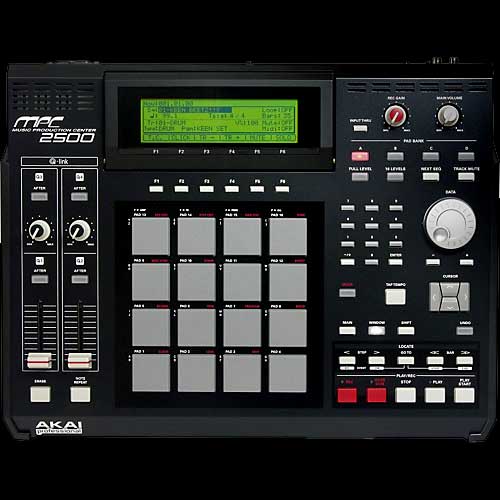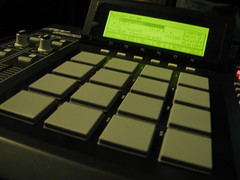Article by Wild Gringo
The beginning thing that hits you upon take the box is the size of MPC 500; it is small. Really, it is very small, just slimy bigger than an A5 sheet. It is as well light and looks cool in my view. Naturally, looks had better matter nothing in audio production.
Build superior is fair, it feels quite sturdy although as you can wait for a budget software, tends towards the ‘plastic’ feel. At the back of the unit we have all our inputs and outputs – first of all the audio; a headphone socket, stereo (L & R) outputs and L & R recording inputs (all these use standard in jacks). A new addition to the MPC range is the power to switch between line and mic level input, so in possibility a condenser mic can be plugged straight in for recording vocals or other sampled sounds.
There’s a compact flashcard slot at the front of the machine that’s the main method of storage (there’s 5 MB of internal Flash memory also this) – as has been the case with the MPC 1000 and MPC 2500, the CF slot is badly planned and requires pin point precision in loading up the CF card – it can take 30 secs to get the card in some of the times.
Read more about MPC 500 Akai
MPC 500 AkaiNaturally, the top of the unit is where all the action is. We have twelve rubber pads to which up to four banks of 12 samples can be assigned (this is the 1st MPC Akai to not have sixteen pads and sixty-four note programs). The pads are quite standardized in feel to the MPC 1000 Akai – stiff, hard and insensitive – as a matter of fact I find them even harder than the 1000. There’s still the option to change the sensitivity, but I was in general unimpressed with the feel of pads compared to those of the MPC 2500 Akai which I feel are pretty close to the feel of older MPCs.
The screen on this MPC is a little blue LCD affair, containing just 2 lines of data. This means there has no multi-line graphic display as found on the big brothers in the MPC range. Hence to navigate through the OS can be somewhat laborious. Naturally in time, you’ll no doubt whiz through it no trouble.
Compared to Other MPCs Akai
MPC 1000 Akai and MPC 2500 Akai owners will be glad to hear that all their sounds and programs had better load up fine in that machine. Obviously at that place are sixteen less pads here, so any programs utilizing those missing notes may struggle, and naturally there are sixteen less tracks per sequence – but project files, effect settings and sequence events all load up fine in my experience. A few incompatibilities will occur from the lack of mixer (and no ability to record mixer changes), and the lack of filters (hence programs don’t carry over filter settings).
About the Author
Read more about MPC 500 Akai
Use and distribution of this article is subject to our Publisher Guidelines
whereby the original author’s information and copyright must be included.
Read more about MPC 500 Akai
Use and distribution of this article is subject to our Publisher Guidelines
whereby the original author’s information and copyright must be included.
Related Akai MPC 2500 Articles




Leave A Comment